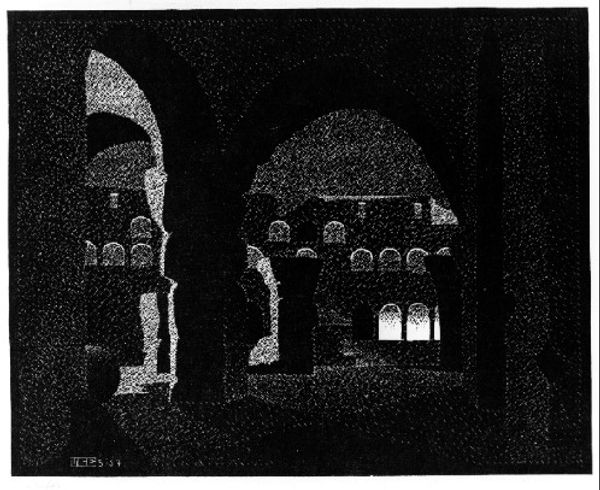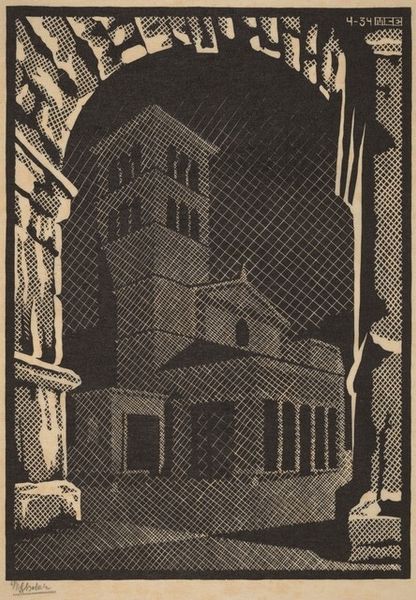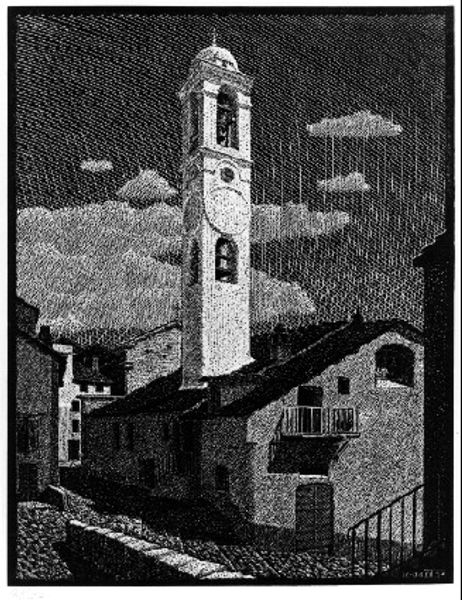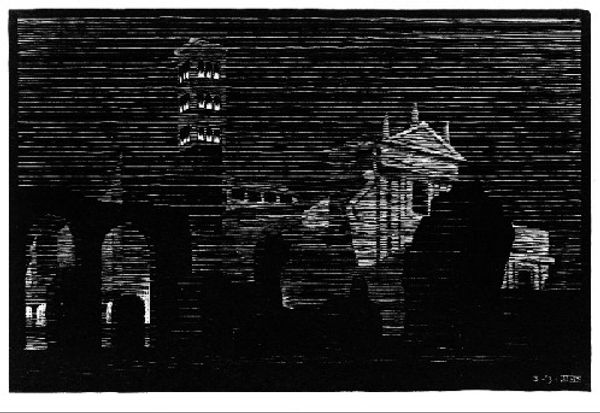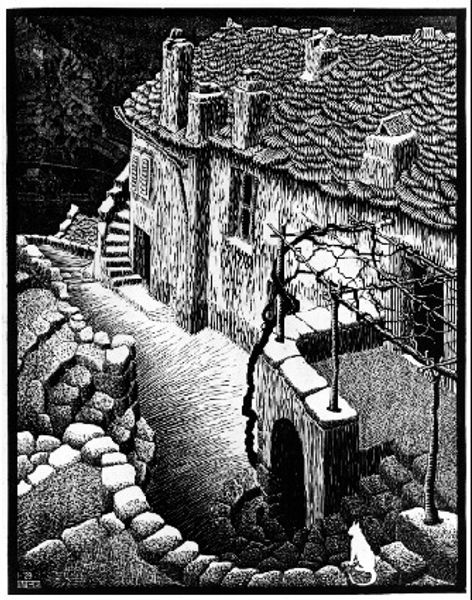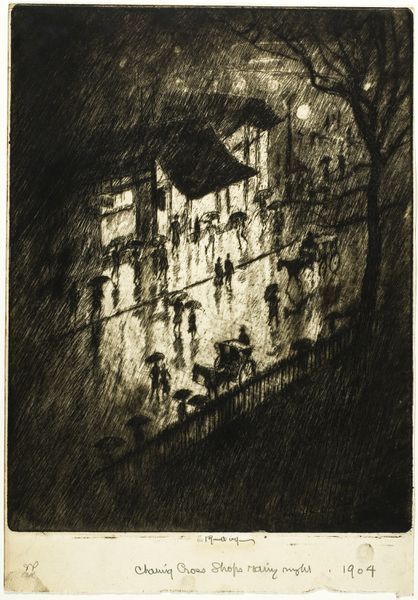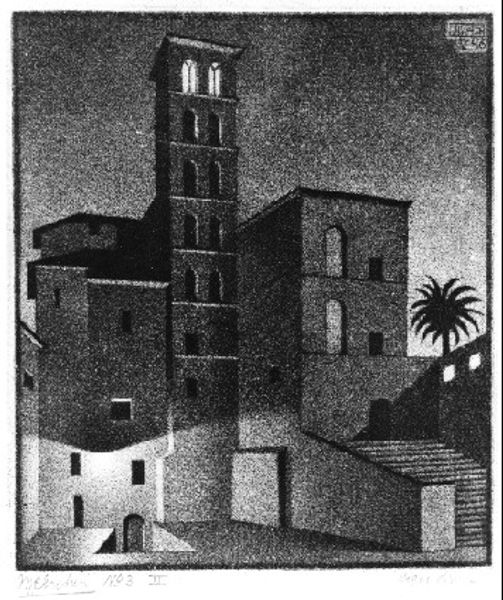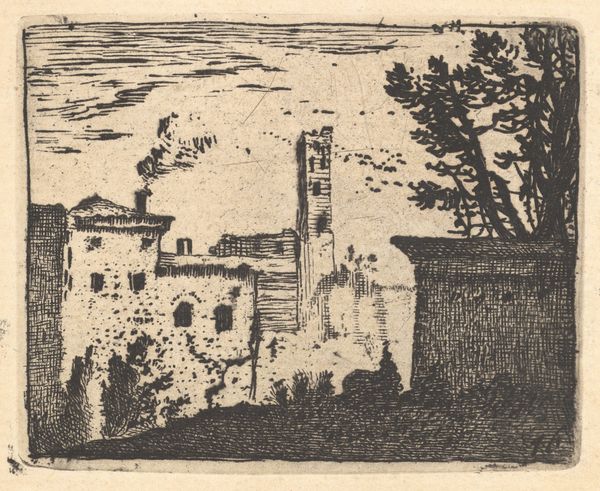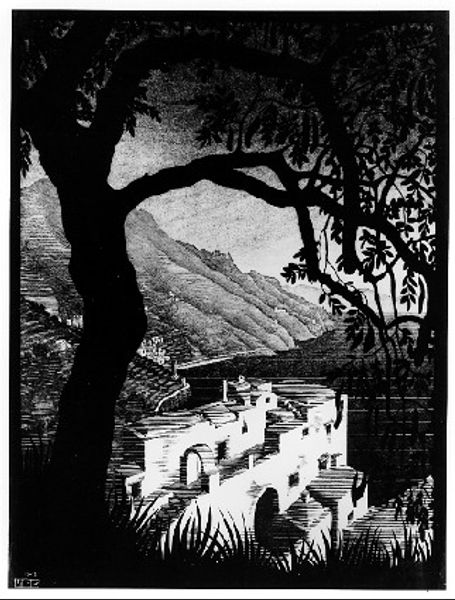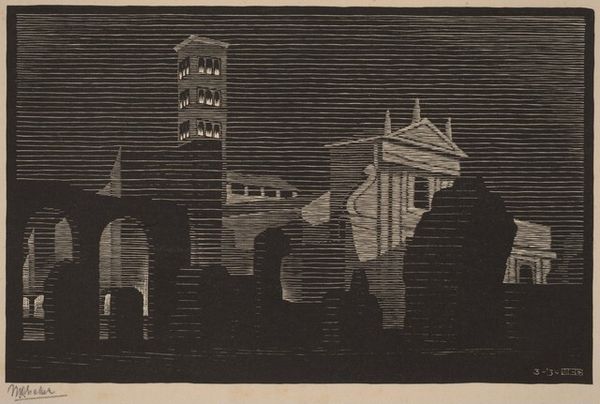
drawing, print, ink
#
drawing
#
line-art
# print
#
lined art
#
line art
#
ink line art
#
linework heavy
#
ink
#
geometric
#
cityscape
#
modernism
Copyright: M.C. Escher,Fair Use
Editor: Here we have M.C. Escher's "Nocturnal Rome, Santa Maria del Popolo," a print from 1934 using ink. The striking detail created with ink gives the work a graphic quality, almost like it’s built from tiny, laborious blocks. How do you see this piece, given Escher's exploration of materials? Curator: Well, for me, this work highlights the labor inherent in printmaking, specifically in how Escher meticulously builds the image. We have to consider the material process itself, how the ink is applied, and how that replicates and disseminates the image widely. The seemingly infinite reproduction made possible contrasts sharply with the singular, hand-crafted creation of the plate itself, turning architecture into an exercise of manual reproduction and its tension with machine. Editor: So, you are less focused on the representational elements, such as the church itself, and more interested in what its creation process can tell us? Curator: Exactly. The depiction of the Santa Maria del Popolo is secondary to the social and economic context of printmaking at the time. What did it mean to depict a historical architectural site through a method reliant on both artistic skill and nascent industrial techniques of the printing press? It prompts questions about access, ownership, and the value of art itself when it can be so easily duplicated. Editor: That’s a really interesting way to frame it. I always focused on Escher's more obviously geometric work, so I had missed how the geometric feel connects so much to his method and reproduction itself. Curator: Indeed! Consider this: he made choices to present this urban scene through a reproducible medium, rather than a unique painting. This directs us toward examining not just "what" is represented, but also "how" and "why" the work becomes available and consumed, moving away from traditional analysis of merely high or fine art. Editor: I'll definitely have to look at art materials beyond just their appearance from now on, to analyze their larger significance in culture. Thanks. Curator: Likewise, thinking about art from this perspective is a process for me, and I always learn something new from viewers who come from a different angle.
Comments
No comments
Be the first to comment and join the conversation on the ultimate creative platform.
